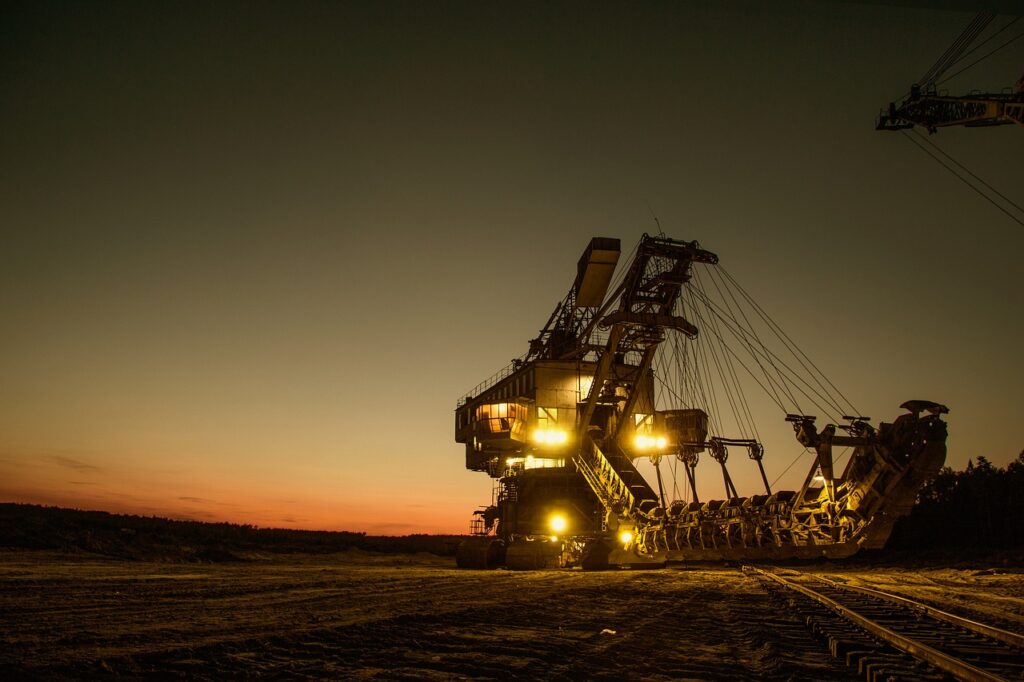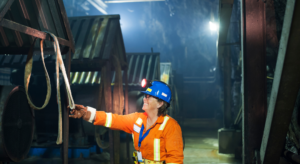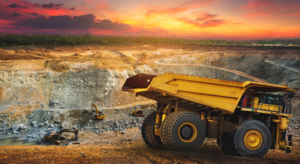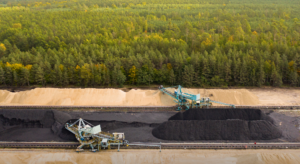The mining 4.0 industry is rapidly evolving as new technologies emerge and companies seek more sustainable, efficient resource extraction methods. One innovative approach gaining significant traction is trackless electric mining, which eliminates conventional diesel equipment and ventilation infrastructure underground.
This transition to battery-electric zero-emission vehicles and associated systems brings immense cost savings and environmental benefits to mines willing to undertake the operational transformation.
Why Go Trackless? The Advantages Over Conventional Mining
Underground mines have relied heavily on diesel trucks, loaders, drill rigs, and other machinery for hauling ore, tunneling, and general mobility. However, these generate exhaust pollutants, heat, noise and require extensive ventilation. This is where the answer to what is trackless in mining and how is it advantageous come into the picture.
Trackless electric mining using battery-electric equipment eliminates these downsides. Electric motors have fewer moving parts, reducing maintenance costs and breakdowns versus internal combustion engines. They also provide instant torque for high productivity.
Mines can significantly downsize ventilation needs without diesel exhaust – a major operational expenditure. Some have managed to eliminate ventilation shafts and fans by going trackless, relying solely on natural airflow. This greatly reduces infrastructure and energy costs. Furthermore, electric mining vehicles also run much quieter, improving the underground working environment.
Electric drivetrains have higher efficiency than diesel, converting over 90% of energy into work versus just 30-40% for combustion engines. Moreover, electricity prices are more stable than fluctuating diesel costs.
All these factors mean trackless electric mining can realize up to a 70% reduction in energy spending overall, adding up to immense savings reflecting the power of modern mining operations.
New Charging and Battery Technologies Enabling All-Electric Operations
Transitioning from diesel to electric equipment has been enabled by step-changes in energy storage and charging capabilities. This will help you know better as to what is trackless in mining:
Optimized Batteries for Mining Environments
Lithium-ion battery chemistries like LFP and LTO have been adapted to withstand the intense demands and harsh conditions of underground mining. Additionally, robust casings protect batteries against vibration, flying debris, and temperature fluctuations.
Batteries are designed for fast charging and efficient energy delivery to power heavy mining applications. Furthermore, advanced thermal management and battery management systems optimize performance and lifespan.
Higher-Speed Charging
Faster charging in trackless electric mining allows batteries to be topped up during rest periods rather than going offline for long durations.
Some electric mining trucks as a part of modern mining operations can also add over 50 kilometers of range in just 15 minutes with ultra-high-power charging up to 700 kilowatts. As a result, this supports continuous operation.
Opportunity Charging
Strategically placed charging stations underground allow “opportunity charging” to extend range during the work cycle. Moreover, even short top-ups during loading, unloading, or between trips can provide an additional boost.
Charging Infrastructure
Mines are installing distributed charging networks with high-capacity systems at parking locations and fast opportunity chargers situated at strategic underground points.
Smart charging management software optimizes power use and battery health. Moreover, this infrastructure enables running electric fleets at scale while keeping hardware costs in check.
Realizing the Benefits of Trackless Electric Mining: Emissions and Cost Reductions
Trackless electric mining delivers profound emissions reductions and cost savings versus conventional diesel equipment.
Eliminating Diesel Exhaust Underground
Diesel particulate matter is classified as carcinogenic by the WHO. Electric equipment eliminates this health hazard along with engine noise and heat.
Some mines have recorded a 95% drop in carbon monoxide, a 75% reduction in nitrous oxides, and a 99% cut in particulate matter after transitioning from diesel fleets. So, these are massive clean air benefits for underground workers.
Slashing Energy Consumption
Electric drivetrains are far more efficient than internal combustion engines, especially when charged off the grid rather than by onsite diesel generators.
One Swedish mine recorded an 80% drop in energy consumption after going all-electric. Others report 50-70% reductions, saving millions in energy bills annually.
Lowering Maintenance Costs
Electric motors have far fewer moving parts than complex diesel engines, greatly reducing wear and tear. Electric drivetrains are simpler to maintain without fuel injection systems, air filters, oil changes, and also exhaust components needed for combustion engines.
Tires also last up to twice as long due to optimized torque delivery from electric motors, reducing a major maintenance cost.
Improving Uptime and Productivity
The simplicity and durability of electric drivetrains also improve uptime. Moreover, studies have shown ~200 hours greater yearly utilization for electric underground vehicles versus diesel. With faster acceleration, they can also increase productivity.
Trackless Electric Mining: Navigating the Transition from Diesel
The transition from entrenched diesel equipment to all-electric operations with trackless electric mining brings challenges that require careful planning and management:
Planning Charging Infrastructure
Mines must install properly distributed charging networks with sufficient power capacity. Planning must account for equipment duty cycles, battery sizes, charging durations, parking patterns, and optimal underground locations for opportunity charging points.
Managing Data Communications Underground
Electric equipment requires robust wireless data networks underground for monitoring battery charge status, health, location, and fault alerts. Lack of proper communication can severely hinder visibility and control. Modern private LTE or 5G networks are optimal for trackless electric fleets.
Retrofitting Legacy Fleets
Some mines add battery packs to existing diesel trucks via trolley assist as an interim step. However, fully realizing the benefits of electrification requires purpose-built electric vehicles. Planning must account for steadily retiring and replacing legacy diesel equipment.
Workforce Re-training
Maintenance staff will need extensive re-training to safely work with high-voltage batteries and electric drivetrains rather than diesel engines. Cultural resistance to changing entrenched workflows is also common and must be overcome through training and change management.
Leaders in Trackless Electric Mining
Progressive mining companies are spearheading the transition and quantifying the benefits of going all-electric:
Boliden’s Aitik Mine Cuts Emissions by 75%
Sweden’s largest open-pit copper mine has replaced diesel trucks and loaders with electric versions, cutting CO2 emissions by 75%. They run Epiroc, Volvo, and Sandvik battery-electric trucks up to 40 tons. The mine is on the path to be diesel-free by 2030.
FMG Runs Vast Electric Fleet in Pilbara Mines
Fortescue Metals Group operates the world’s largest fleet of battery-electric mining trucks – over 50 – at their Chichester iron ore mines in Pilbara, Australia. They also use electric excavators and drills, eliminating five million liters of diesel annually.
Newmont Looks to Electric Haulage for Carbon Reduction
Leading gold miner Newmont plans to transition its extensive haul truck fleets to electric to help meet sustainability targets. Their first e-truck pilots start in 2023 in Nevada and Ghana using underground Load Haul Dump (LHD) vehicles.
These and other companies demonstrate the viability and benefits of trackless electric systems for miners willing to undertake the operational transformation.
The Future of All-Electric Mining
As technology gets better and equipment costs go down, more mines worldwide can consider using trackless electric mining. This means mining vehicles that run on electricity without needing tracks.
New charging systems can quickly add a lot of power to electric vehicles, so they can keep working without taking long breaks. There are also better batteries that charge faster and hold more power.
Mining vehicles can also start driving themselves, thanks to smart systems that help them see and navigate in underground mines.
Many mines are switching to all-electric systems because they are better for the environment and can improve how the mine works. This change is happening faster as more mines see the benefits.
If you want to learn more about this shift to all-electric mining or trackless electric mining and other advancements in mining, you can attend the 5th Mining 4.0: North America 2024 in Toronto, Canada on April 10-11, 2024. This event brings together people in the industry and tech leaders who are working to make mines more modern and efficient.
You can hear about the latest solutions for exploration, operations, safety, and sustainability. It’s a chance to connect with others who are passionate about making mining better through innovation. Don’t just follow the changes, be part of leading the way!





